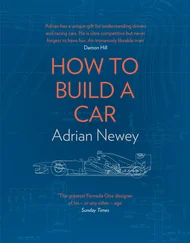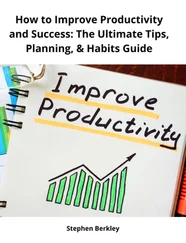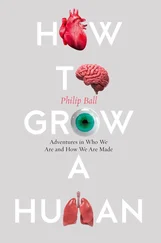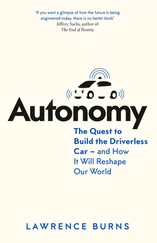Eyal, Nir - Hooked - How to Build Habit-Forming Products
Здесь есть возможность читать онлайн «Eyal, Nir - Hooked - How to Build Habit-Forming Products» весь текст электронной книги совершенно бесплатно (целиком полную версию без сокращений). В некоторых случаях можно слушать аудио, скачать через торрент в формате fb2 и присутствует краткое содержание. Год выпуска: 2014, Издательство: Nir Eyal, Жанр: Старинная литература, на английском языке. Описание произведения, (предисловие) а так же отзывы посетителей доступны на портале библиотеки ЛибКат.
- Название:Hooked: How to Build Habit-Forming Products
- Автор:
- Издательство:Nir Eyal
- Жанр:
- Год:2014
- ISBN:нет данных
- Рейтинг книги:5 / 5. Голосов: 1
-
Избранное:Добавить в избранное
- Отзывы:
-
Ваша оценка:
- 100
- 1
- 2
- 3
- 4
- 5
Hooked: How to Build Habit-Forming Products: краткое содержание, описание и аннотация
Предлагаем к чтению аннотацию, описание, краткое содержание или предисловие (зависит от того, что написал сам автор книги «Hooked: How to Build Habit-Forming Products»). Если вы не нашли необходимую информацию о книге — напишите в комментариях, мы постараемся отыскать её.
Hooked: How to Build Habit-Forming Products — читать онлайн бесплатно полную книгу (весь текст) целиком
Ниже представлен текст книги, разбитый по страницам. Система сохранения места последней прочитанной страницы, позволяет с удобством читать онлайн бесплатно книгу «Hooked: How to Build Habit-Forming Products», без необходимости каждый раз заново искать на чём Вы остановились. Поставьте закладку, и сможете в любой момент перейти на страницу, на которой закончили чтение.
Интервал:
Закладка:
Now it is time to understand the mechanics of connecting the user’s problem with your solution by utilizing the next step in the Hook Model. In the next chapter, we’ll find out how moving people from triggers to actions is critical in establishing new routines.
***
Remember and Share
- Triggers cue the user to take action and are the first step in the Hook Model.
- Triggers come in two types — external and internal.
- External triggers tell the user what to do next by placing information within the user’s environment.
- Internal triggers tell the user what to do next through associations stored in the user’s memory.
- Negative emotions frequently serve as internal triggers.
- To build a habit-forming product, makers need to understand which user emotions may be tied to internal triggers and know how to leverage external triggers to drive the user to action.
***
Do This Now
Refer to the answers you came up with in the last “Do This Now” section to complete the following exercises:
- Who is your product’s user?
- What is the user doing right before your intended habit?
- Come up with three i nternal triggers that could cue your user to action. Refer to the “5 Whys Method” described in this chapter.
- Which internal trigger does your user experience most frequently?
- Finish this brief narrative using the most frequent internal trigger and the habit you are designing:
“Every time the user (internal trigger) , he/she ( first action of intended habit ).”
- Refer back to the question about what the user is doing right before the first action of the habit. What might be places and times to send an external trigger?
- How can you couple an external trigger as closely as possible to when the user’s internal trigger fires?
- Think of at least three conventional ways to trigger your user with current technology (emails, notifications, text messages, etc.). Then stretch yourself to come up with at least three crazy, or currently impossible, ideas for ways to trigger your user (wearable computers, biometric sensors, carrier pigeons, etc.). You may find that your crazy ideas spur some new approaches, which may not be so crazy after all. In a few years, new technologies will create all sorts of currently unimaginable triggering opportunities.

3. ACTION
The next step in The Hook is the action phase. The trigger, driven by internal or external cues, informs the user of what to do next; however, if the user does not take action, the trigger is useless. To initiate action, doing must be easier than thinking. Remember, a habit is a behavior done with little or no conscious thought. The more effort — either physical or mental — required to perform the desired action, the less likely it is to occur.
Action vs. Inaction
If action is paramount to habit-formation, how can a product designer influence users to act? Is there a formula for behavior? It turns out there is.
While there are many theories about what drives human behaviors, Dr. BJ Fogg, Director of the Persuasive Technology Lab at Stanford University, has developed a model that serves as a relatively simple way to understand what drives our actions.
Fogg posits that there are three ingredients required to initiate any and all behaviors: (1) the user must have sufficient motivation; (2) the user must have the ability to complete the desired action; and (3) a trigger must be present to activate the behavior.
The Fogg Behavior Model is represented in a formula, B = MAT, which represents that a given behavior will occur when motivation, ability, and a trigger are present at the same time and in sufficient degrees. [lv]If any component of this formula is missing or inadequate, the user will not cross the “Action Line” and the behavior will not occur.
Let’s walk through an example Fogg uses to explain his model. Imagine a time when your mobile phone rang but you didn’t answer it. Why not?
Perhaps the phone was buried in a bag, making it difficult to reach. In this case your inability to easily answer the call inhibited the action. Your ability was limited.
Maybe you thought the caller was a telemarketer, someone you did not want to speak to. So, your lack of motivation influenced you to ignore the call.
Or, maybe the call was important and within arm’s reach, but the ringer on your phone was silenced. Despite having both a strong motivation and easy access to answer the call, it was completely missed because you never heard it ring — in other words, no trigger was present.
In the previous chapter, we covered triggers, so now let’s dive deeper into the other two components of the Fogg Behavior Model: motivation and ability.
Motivation
While a trigger cues an action, motivation defines the level of desire to take that action. Dr. Edward Deci, Professor of Psychology at the University of Rochester and a leading researcher on Self-Determination Theory, defines motivation as, " the energy for action ." [lvi]
While the nature of motivation is a widely contested topic in psychology, Fogg argues that three Core Motivators drive our desire to act.
Fogg states that all humans are motivated to seek pleasure and avoid pain, to seek hope and avoid fear, and finally, to seek social acceptance and avoid rejection. The two sides of the three Core Motivators can be thought of as levers to increase or decrease the likelihood of a person taking a particular action by increasing or decreasing their motivation.
Motivation Examples in Advertising
Perhaps no industry makes the elements of motivation more explicit than the advertising business. Advertisers regularly tap into people’s motivations to influence their habits. By looking at ads with a critical eye, we can identify how they attempt to influence our actions.
For example, Barack Obama's 2008 presidential campaign leveraged a deeply inspiring message and image during a time of economic and political upheaval. An iconic poster designed by artist Shepard Fairey conveyed the idea of “hope,” not only with the word printed in bold letters along the bottom of the image, but also through Obama’s steadfast gaze as he looked confidently toward the future. (Unfortunately, the image was at the center of a copyright battle between Fairey and the Associated Press, which claimed ownership of the original photograph used in the artwork, so I’ve chosen to not to include it here. If you can’t recall the image, there is a link in the endnotes). [lvii]
Another example of motivation in advertising relates to the old saying, “sex sells.” Long an advertising standard, images of buff, scantily clad (and usually female) bodies are used to hawk everything from the latest Victoria’s Secret lingerie to domain names through GoDaddy.com and fast food chains such as Carl’s Jr. and Burger King (figure 4). These and countless others use the voyeuristic promise of pleasure to capture attention and motivate action.
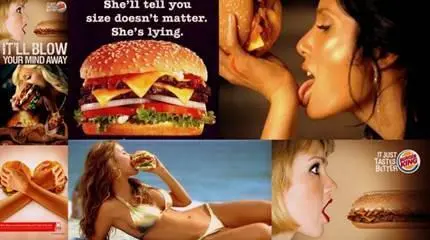
Figure 4
Of course, this strategy only appeals to a particular demographic's association with sex as a salient motivator. While teenage boys — the common target for these ads — may find them inspiring, others may find them distasteful. What motivates some people will not motivate others, a fact that provides all the more reason to understand the needs of your particular target audience.
Читать дальшеИнтервал:
Закладка:
Похожие книги на «Hooked: How to Build Habit-Forming Products»
Представляем Вашему вниманию похожие книги на «Hooked: How to Build Habit-Forming Products» списком для выбора. Мы отобрали схожую по названию и смыслу литературу в надежде предоставить читателям больше вариантов отыскать новые, интересные, ещё непрочитанные произведения.
Обсуждение, отзывы о книге «Hooked: How to Build Habit-Forming Products» и просто собственные мнения читателей. Оставьте ваши комментарии, напишите, что Вы думаете о произведении, его смысле или главных героях. Укажите что конкретно понравилось, а что нет, и почему Вы так считаете.


